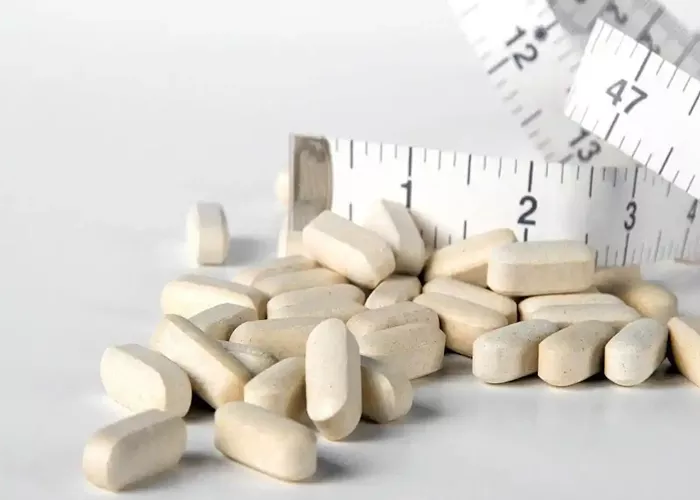Several pharmaceutical companies are advancing new weight loss medications designed to not only help individuals shed pounds but also preserve or even promote muscle growth. Industry experts, clinical trial specialists, and healthcare professionals highlight that for these drugs to gain regulatory approval, they will likely need to offer benefits beyond just weight loss, such as improvements in overall health.
The new treatments aim to complement or replace popular weight loss options such as Novo Nordisk’s Wegovy and Eli Lilly’s Zepbound. While both of these drugs have proven effective in helping patients lose 15% to 20% of their body weight, concerns have emerged regarding the muscle loss associated with their use. In Wegovy’s trials, for instance, up to 40% of the weight lost was attributed to reductions in lean body mass, not just fat. This has raised questions among healthcare professionals about the long-term impact of these medications on muscle health.
Although still a few years away from potential approval, these emerging drugs are being developed by a range of companies including Eli Lilly, Regeneron, Scholar Rock, and Veru. These drugs aim to target proteins that either preserve muscle or stimulate its growth, offering a novel approach compared to Wegovy and Zepbound, which focus on regulating appetite through the GLP-1 protein.
Veru’s enobosarm, for example, showed promising results in a January trial involving 168 older patients, reducing muscle loss by 71% when combined with Wegovy. Eli Lilly’s bimagrumab, a muscle-preserving drug, is set to release data later this year, with ongoing studies evaluating its potential in combination with other treatments.
The financial outlook for these drugs is significant. According to New England Consulting Group, the market for these treatments could generate between $1 billion and $5 billion annually by the end of the decade. Additionally, analysts forecast that the broader obesity drug market could reach $150 billion annually by the early 2030s.
From a clinical perspective, experts note that these drugs could offer substantial benefits to older adults or individuals at greater risk of muscle loss, falls, and fractures. Maintaining muscle mass is also crucial for preventing weight regain over time, as muscle helps to sustain metabolism.
“If the focus shifts from mere weight loss to maintaining that weight loss over the long term, it could significantly impact how we view these treatments,” said Riley McCarthy, Senior Project Manager at NECG.
Despite the promise of muscle-preserving drugs, the approval process may be challenging. The U.S. Food and Drug Administration (FDA) has published draft guidelines which suggest that while a loss of lean mass is not inherently harmful, drug developers should measure participants’ muscle-to-fat ratio in trials. Experts remain skeptical that the FDA will approve drugs based solely on muscle preservation, as the agency typically requires evidence of broader health improvements such as reduced side effects and better heart health.
Veru’s study, which tracked participants’ ability to climb stairs, could provide crucial functional benefits that help these drugs gain approval. “Ultimately, the FDA will likely need to see evidence of functional improvements, such as greater physical performance,” said Leerink analyst David Risinger.
In addition to Veru’s androgen receptor-targeting drug, many of the new treatments focus on the myostatin protein, which regulates muscle growth. These drugs, which were originally developed for neuromuscular disorders like Duchenne muscular dystrophy, are showing potential in promoting muscle growth while reducing fat, as they help muscles consume energy even when not actively engaged.
Professor Se-Jin Lee, who pioneered research on the myostatin pathway, believes that combining these treatments with GLP-1 drugs could yield optimal results. Such combinations could reduce the necessary dosage of GLP-1 drugs, thereby decreasing gastrointestinal side effects.
Pharmaceutical companies are now turning their attention to a mix of strategies, with Lilly’s bimagrumab and Regeneron’s trevogrumab undergoing mid-stage trials. These drugs are being tested both independently and alongside other treatments, including Wegovy, to assess their efficacy in preserving muscle mass while promoting weight loss.
In clinical trials, drugs like Scholar Rock’s apitegromab are aiming to change lean body mass, but clinicians are emphasizing the need for tangible performance improvements alongside structural changes in muscle size. “For these treatments to be viable, they must show not just an increase in muscle mass, but measurable improvements in physical function,” said Dr. Graham McMahon, an endocrinologist at Feinberg School of Medicine.
As the weight loss drug market evolves, these new treatments could significantly alter the way obesity and muscle health are managed, making them a critical area to watch in the coming years.
Related Topics:
Ozempic for Weight Loss: Are the Side Effects Worth It?


